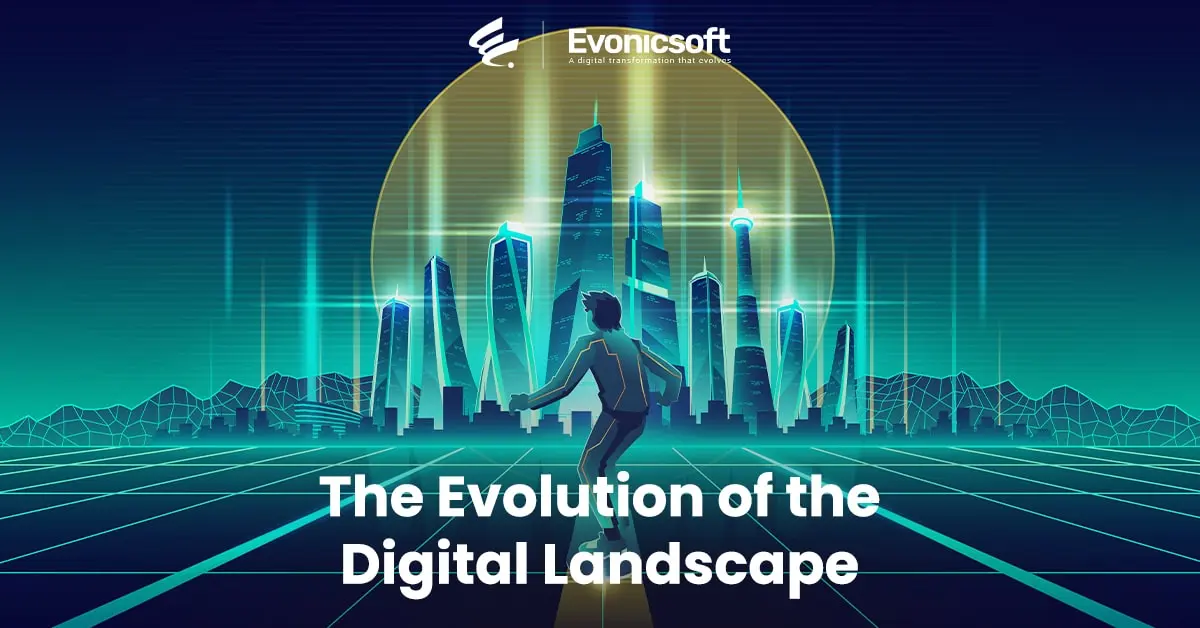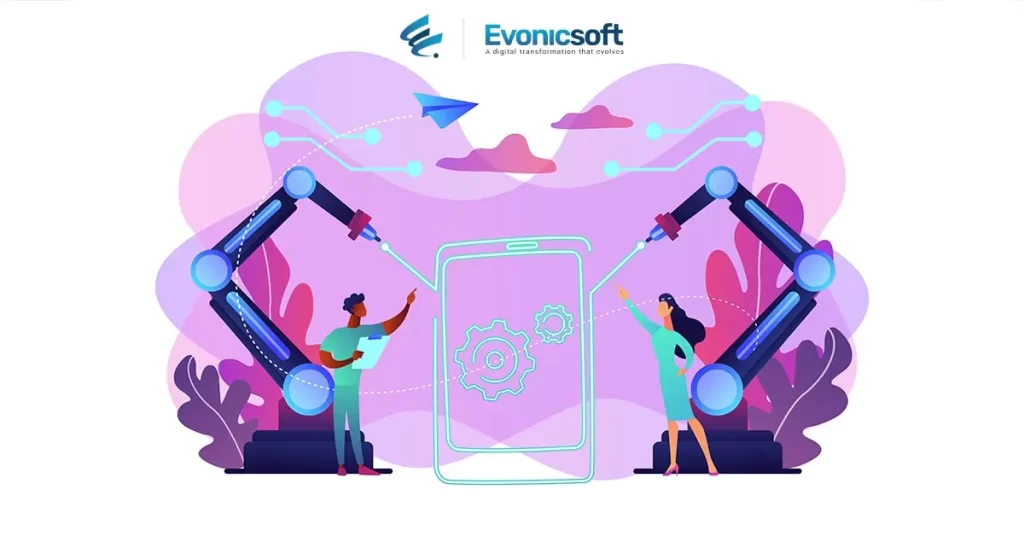
The Evolution of the Digital Landscape
- Sami Ul Hassan
- 23/02/2024
- Digital
The digital landscape is constantly evolving, with new technologies, platforms, and strategies emerging every day. As businesses and consumers become increasingly reliant on digital tools and platforms. So, it’s important to understand the current state of the digital landscape and how it has evolved over time.
In this article, we’ll explore what sits at the center of the digital landscape. Also, the different components that make up the digital landscape, and how it has evolved over the years.
What Sits at the Center of the Digital Landscape?
At the center of the digital landscape is the internet. The internet is the foundation of the digital world, connecting people, devices, and information across the globe. It allows for the creation, sharing, and consumption of digital content, and serves as the backbone for many digital tools and platforms.
The Role of Social Media
Social media has become a major player in the digital landscape, with billions of users across various platforms. It has transformed the way we communicate, connect, and consume information. Social media platforms like Facebook, Twitter, and Instagram have become integral parts of our daily lives, and businesses have also leveraged these platforms for marketing and advertising purposes.
The Rise of E-commerce
E-commerce has also become a significant part of the digital landscape, with more and more consumers turning to online shopping for convenience and variety. E-commerce platforms like Amazon, Alibaba, and eBay have upgraded the way we shop, and businesses have had to adapt to this shift in consumer behavior.
The Emergence of Artificial Intelligence
Artificial intelligence (AI) has also emerged as a key player in the digital landscape. AI technology is being used in various industries, from healthcare to finance, and has the potential to transform the way we live and work. In the digital landscape, AI is being used for tasks such as personalization, data analysis, and automation.
The Components of the Digital Landscape
The digital landscape is made up of various components, each playing a unique role in the overall ecosystem. Let’s take a closer look at some of these components.
Digital Landscape of Advertising
Digital advertising has become a crucial part of the digital landscape, with businesses investing billions of dollars in online ads each year. The digital advertising landscape is constantly evolving, with new platforms, formats, and targeting options emerging all the time.
Some of the key players in the digital advertising landscape include Google, Facebook, and Amazon. These platforms offer a variety of ad formats, such as search ads, display ads, and video ads, and allow businesses to target specific audiences based on demographics, interests, and behaviors.
Content Optimization
Content optimization is another important component of the digital landscape. With so much content being created and shared online, it’s crucial for businesses to optimize their content to stand out and reach their target audience.
This includes using search engine optimization (SEO) techniques to improve the visibility of their content on search engines, as well as creating high-quality, engaging content that resonates with their audience.
Digital Twin Landscape
Digital twins are virtual representations of physical objects, systems, or processes. They are becoming increasingly popular in industries such as manufacturing, healthcare, and transportation, as they allow for better monitoring, analysis, and optimization of real-world assets.
In the digital landscape, digital twins are used to create simulations, test new products or processes, and improve efficiency and performance.
The Evolution of the Digital Landscape

The digital landscape has come a long way since the early days of the internet. Let’s take a look at some of the key milestones in its evolution.
The Birth of the Internet
The internet was first created in the late 1960s as a way for computers to communicate with each other. However, it wasn’t until the 1990s that the internet became widely accessible to the public, with the launch of the World Wide Web.
The Rise of Social Media
Social media emerged in the early 2000s, with platforms like MySpace and LinkedIn gaining popularity. However, it wasn’t until the launch of Facebook in 2004 that social media truly took off. Since then, social media has become an integral part of the digital landscape, with new platforms constantly emerging.
The Mobile Revolution
The introduction of smartphones in the late 2000s sparked a mobile revolution, with more and more people accessing the internet and using digital tools and platforms on their mobile devices. This led to the development of mobile-friendly websites and apps, and businesses had to adapt to this shift in consumer behavior.
The Emergence of AI and IoT
In recent years, we’ve seen the emergence of artificial intelligence and the Internet of Things (IoT) in the digital landscape. These technologies have the potential to transform the way we live and work, and are being integrated into various industries and applications.
The Future of the Digital Landscape

The digital landscape is constantly evolving, and it’s difficult to predict exactly what the future holds. However, there are some trends and developments that we can expect to see in the coming years.
The Continued Growth of E-commerce
E-commerce is expected to continue its rapid growth, with more and more consumers turning to online shopping for convenience and variety. This will likely lead to further advancements in e-commerce technology and logistics, as businesses strive to meet the demands of online shoppers.
Increased Use of AI and Automation
As AI technology becomes more advanced and accessible, we can expect to see increased use of AI and automation in various industries and applications. This will likely lead to improved efficiency, productivity, and decision-making.
The Integration of Virtual and Augmented Reality
Virtual and augmented reality technologies are becoming more advanced and affordable, and we can expect to see them integrated into the digital landscape in the coming years. This will open up new possibilities for immersive experiences and applications in industries such as gaming, education, and healthcare.
Conclusion
The digital landscape is constantly evolving, with new technologies, platforms, and strategies emerging all the time. Understanding the current state of the digital landscape and how it has evolved over time is crucial for businesses and individuals looking to stay ahead in the digital world. By keeping up with the latest trends and developments, you can ensure that you’re making the most of the opportunities presented by the ever-changing digital landscape.






